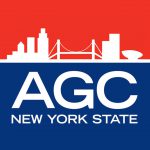Court Denies Plaintiff’s Motion to Add Third-Party Defendants As Direct Defendants In Case Involving Trip and Fall on Speed Bump In Parking Garage
published on June 11, 2024
Court Denies Plaintiff’s Motion to Add Third-Party Defendants As Direct Defendants In Case Involving Trip and Fall on Speed Bump In Parking Garage
published on June 11, 2024
In a decision dated June 10, 2024, the Hon. Lisa S. Headley denied plaintiff’s motion to amend the pleadings to include our clients, The Helena Associates LLC and The Durst Organization (“Helena and Durst”), as direct defendants. Plaintiff tripped and fell on an allegedly defective speed bump in the parking garage of 601 West 57th Street. The parking garage was leased and maintained by defendant MPT57, LLC. The plaintiff sought leave to amend her complaint to name third-party defendants Helena and Durst (landlord) as direct defendants after the expiration of the applicable statute of limitations. Plaintiff argued that the new claims of negligence against Helena and Durst “relate back” to the original complaint and that Helena and Durst were “united in interest” with defendant MTP57. Plaintiff also argued there would be no prejudice to Helena and Durst because depositions have not yet been conducted, and Helena and Durst have since been impleaded by MTP57 as third-party defendants for contribution and indemnification. In opposition, third-party defendants Helena and Durst argued that the motion was time-barred by the statute of limitations, and they would be highly prejudiced by the untimely filing. Furthermore, they argued that the “relation back” doctrine does not apply because their interests are not united with defendant MTP57. The Court denied plaintiff’s motion to add third-party defendants Helena and Durst as direct defendants, finding “no semblance of an excuse” for plaintiff’s extensive delay, and finding that such amendment would be prejudicial to the third-party defendants. The statute of limitations had expired on June 26, 2023, and plaintiff was on notice regarding the additional defendants, Helena and Durst, by the lease agreement provided during discovery in 2022.
Lorraine Donnelly v. MTP57 LLC, et al., Index No. 161188/21 (Sup. Ct. N.Y. Co., June 10, 2024)
On April 11, Stephen M. Cohen and Thomas J. Hall lectured at a seminar for Plaza Contracting Company Inc. entitled “Best Practices for Post-Incident Investigation” in New York, New York.
published on April 11, 2024
On April 11, Stephen M. Cohen and Thomas J. Hall lectured at a seminar for Plaza Contracting Company Inc. entitled “Best Practices for Post-Incident Investigation” in New York, New York.
published on April 11, 2024
On March 13, Thomas J. Hall lectured at a seminar for Travelers Construction Claims entitled “Evaluating and Defending Loss of Earnings Claims by Union Construction Workers” in New York, New York.
published on March 13, 2024
On March 13, Thomas J. Hall lectured at a seminar for Travelers Construction Claims entitled “Evaluating and Defending Loss of Earnings Claims by Union Construction Workers” in New York, New York.
published on March 13, 2024
Court Denies Plaintiff’s Motion for Summary Judgment on Labor Law § 240(1), Dismisses Complaint against Tenant and Dismisses Labor Law §§ 200 and 241(6) Claims Against Building Owner
published on March 08, 2024
Court Denies Plaintiff’s Motion for Summary Judgment on Labor Law § 240(1), Dismisses Complaint against Tenant and Dismisses Labor Law §§ 200 and 241(6) Claims Against Building Owner
published on March 08, 2024
In a series of decisions dated February 5 and 6, 2024, the Hon. Kevin J. Kerrigan denied the plaintiff’s motion seeking summary judgment on his Labor Law §240(1) claim, granted our client New York City Housing Authority summary judgment dismissing the plaintiff’s complaint against it in its entirety and granted our client LIC 73, LLC summary judgment dismissing the plaintiff’s common law negligence, Labor Law §§200 and 241(6) claims and dismissing co-defendant’s cross-claims for common law indemnity and contribution. The plaintiff, a laborer employed by non-party Archstone Builders, claimed that he was injured when he fell from an A-frame ladder while removing flex duct from the a ceiling. The flex duct was connected to a temporary air conditioning unit being used to cool occupied office space during construction. With respect to NYCHA, Judge Kerrigan concluded that as a tenant of the building which did not contract for or supervise the work, it was not a Labor Law defendant. Given this finding, the plaintiff’s complaint as against NYCHA was dismissed in its entirety. As for LIC 73, the Judge agreed that it could not be subject to liability under the common law or pursuant to Labor Law §200 because it did not supervise, direct or control the means and methods of the plaintiff’s work. The Judge also agreed that dismissal of the plaintiff’s Labor Law §241(6) claim was warranted because none of the Industrial Code Rules cited by the plaintiff were violated. As for the plaintiff’s Labor Law §240(1) claim, Judge Kerrigan focused on the plaintiff’s deposition testimony that he did not know whether he fell because the ladder moved, or whether the ladder moved after he started to fall. Ultimately, the Judge found questions of fact as to whether the ladder was unsecured or whether the plaintiff simply fell. Additionally, Judge Kerrigan determined that there were also questions of fact as to whether Labor Law §240(1) was applicable because the plaintiff was removing the duct work prior to construction beginning, which may not constitute protected work. Finally, the Judge dismissed the co-defendants’ cross-claims for common law indemnity and contribution based on a finding that LIC 73 was not negligent as a matter of law.
Gerard Quinn v. The City of New York, Index No. 718810/20 (Sup. Ct. Queens Co., Feb. 5 and 6, 2024)
Court Grants Defendant’s Pre-answer Motion and Dismisses Plaintiff’s Complaint as a Matter of Law
published on January 24, 2024
Court Grants Defendant’s Pre-answer Motion and Dismisses Plaintiff’s Complaint as a Matter of Law
published on January 24, 2024
In a decision dated January 23, 2024, the Hon. Lizette Colon of Richmond County Supreme Court granted our pre-answer motion to dismiss the plaintiff’s complaint against our client, the Baron Hirsch Cemetery Association, Inc. (“BHCA”). The plaintiff, Rocco’s Landscaping & Concrete Service, LLC, was a contractor retained by BHCA to perform groundskeeping work at the cemetery. Ultimately, the lawsuit commenced by Rocco’s was ancillary to a separate lawsuit for the allegedly wrongful death of one of Rocco’s employees while performing groundskeeping work at the cemetery. In its complaint, Rocco’s set forth causes of action for intentional infliction of emotional distress, defamation and wrongful termination under New York’s whistleblower law. Judge Colon agreed with our argument that the plaintiff failed to state a cause of action for intentional infliction of emotional distress based on Rocco’s corporate status (i.e., a corporate entity cannot be distressed). The Judge also agreed with our argument that Rocco’s failed to state a cause of action for defamation since the allegedly defamatory statements were made in connection with the underlying lawsuit and, therefore, subject to an absolute privilege. Finally, the Judge agreed that Rocco’s failed to state a cause of action under New York’s whistleblower law since Rocco’s was not an employee of BHCA and does not meet the definition of a whistleblower under the statute. Further, the Court granted our request for an award of costs and sanctions for the plaintiff’s asserting and continuing of a patently frivolous action.
Rocco’s Landscaping and Concrete Serv., LLC v. Baron Hirsch Cemetery Assoc., Inc. et al., Index No.: 151682/2023 (Sup. Ct. Richmond Co., Jan. 23, 2024)
We are pleased to announce that Karen Maniscalco, Thomas Ryan and Thomas Cirone have become Partners of the Firm.
published on January 02, 2024
We are pleased to announce that Karen Maniscalco, Thomas Ryan and Thomas Cirone have become Partners of the Firm.
published on January 02, 2024
Court Dismisses Third-Party Plaintiffs’ Complaint Against Contractor in Action for Property Damage Allegedly Caused by Water Penetrating Moisture Barrier
published on December 14, 2023
Court Dismisses Third-Party Plaintiffs’ Complaint Against Contractor in Action for Property Damage Allegedly Caused by Water Penetrating Moisture Barrier
published on December 14, 2023
In a decision, dated December 12, 2023, the Hon. Debra A. James granted the motion brought by our client, Adelphi Restoration Corp., and dismissed the third-party plaintiffs’ complaint in its entirety as a matter of law with prejudice. The third-party plaintiffs alleged damage to their apartment due to water damage that was penetrating the exterior moisture barrier. In reaching its decision, the Court determined that the negligence cause of action was dismissed as time barred. The common law and contribution claims were dismissed as the claims against our client were for purely economic damages. Finally, the claim for common law indemnity was dismissed for the failure to state a cause of action as the third-party plaintiff would never be liable to another due to Adelphi’s alleged negligence.
Anthony Gordon v. 476 Broadway Realty Corp. et al., Index No. 103951/2012 (Sup. Ct. N.Y. Co., Dec. 12, 2023)
Court Dismisses Plaintiff’s Complaint in Construction Accident Case Involving a Union Laborer Who Was Struck By a Swinging Load on a Crane and Then Fell Into an Adjacent Trench
published on November 10, 2023
Court Dismisses Plaintiff’s Complaint in Construction Accident Case Involving a Union Laborer Who Was Struck By a Swinging Load on a Crane and Then Fell Into an Adjacent Trench
published on November 10, 2023
In a decision dated November 3, 2023, the Hon. Stephen L. Petrillo granted the motion brought by our clients NY-NJ Link Developer, LLC, Macquorie Group Limited, Kiewit Development Company and The Port Authority of New York and New Jersey and dismissed plaintiff’s complaint in its entirety as a matter of law with prejudice. This litigation arises out of the Goethals Bridge Replacement Construction project (“the Project”). Plaintiff, a union laborer out of Local 472 employed by Kiewit-Weeks-Massman, AJV, alleges that he was injured on October 26, 2017, when he was struck on the left side of his body by a swinging load on a crane that caused him to fall into an adjacent trench and sustain various personal injuries. In reaching its decision, the Court found that New Jersey law applied and that our clients did not owe a duty of care to plaintiff. The Court endorsed our choice of law analysis and agreed that our clients, the ownership entities of the Project, did not have any direct or indirect involvement in the means and methods of the plaintiff’s work and that none of the exceptions to the general rule applied, contrary to plaintiff’s arguments.
Erwin Campoverde v. NY-NJ Link Developer, LLC et al., Index No. ESX-L-6909-18 (N.J. Sup. Ct. Essex Co., Nov. 3, 2023)
Court Dismisses Plaintiff Carpenter’s Complaint Where He Stepped or Slipped Into a Hole in Decking
published on October 02, 2023
Court Dismisses Plaintiff Carpenter’s Complaint Where He Stepped or Slipped Into a Hole in Decking
published on October 02, 2023
In a decision dated August 25, 2023, the Hon. Paul A. Goetz denied plaintiff’s motion seeking summary judgment on his Labor Law §240(1) claims and granted our clients, Tishman Construction Corporation and the Port Authority of New York and New Jersey summary judgment dismissing the plaintiff’s complaint in its entirety. Briefly, the plaintiff, a union carpenter, claimed that he was injured when he stepped or slipped into an opening in the incomplete core slab plywood decking, causing him to fall part way through the opening. In his decision, Judge Goetz found that the plaintiff’s alleged accident fell within the scope of Labor Law §240(1), but determined that there was no violation since we proved that the nature of the work taking place at the accident location precluded the use of a cover over the hole or barricades around it. Judge Goetz agreed with our argument that, in opposition to our motion the plaintiff failed to raise a question of fact regarding the failure or inadequacy of any other safety device that would give rise to a violation. Essentially, Judge Goetz concluded that the defendants established that “the accident was caused by an ordinary peril of the worksite,” which did not fall within the scope of Labor Law §240(1).
With respect to the plaintiff’s Labor Law §241(6) claim, predicated on an alleged violation of Industrial Code Rule 23-1.7(b)(1) (protection from hazardous openings), Judge Goetz determined that the Rule was inapplicable since the hole that the plaintiff stepped or slipped into was too small for the plaintiff to fall through. Therefore, he determined that the Rule was inapplicable and could not have been violated. Judge Goetz also found that our clients were entitled to dismissal of the plaintiff’s Labor Law §200 and common law negligence claims against them since the accident was caused by the means and methods of the plaintiff’s work, which the defendants did not supervise, direct or control.
Javier Munoz v. Tishman Construction Corporation, etc. al, Index No. 160836/2016 (Sup. Ct. N.Y. Co., Aug. 25, 2023)
Court Denies Plaintiff’s Motion for Summary Judgment on Labor Law §§240(1) and 241(6) Claims, Dismisses Plaintiff’s Labor Law §200 Claim Against Contractor and Grants Contractor Conditional Contractual Indemnity Against Painting Subcontractor
published on September 06, 2023
Court Denies Plaintiff’s Motion for Summary Judgment on Labor Law §§240(1) and 241(6) Claims, Dismisses Plaintiff’s Labor Law §200 Claim Against Contractor and Grants Contractor Conditional Contractual Indemnity Against Painting Subcontractor
published on September 06, 2023
In a decision dated August 3, 2023, the Hon. Nancy Quinn Koba denied plaintiff’s motion seeking summary judgment on his Labor Law §§240(1) and 241(6) claims, granted our client Yonkers Contacting Company, Inc. conditional summary judgment judgment on its claim for contractual indemnification against Allied Painting, Inc.; and granted YCC summary judgment dismissing plaintiff’s Labor Law §200 claim against it. With respect to plaintiff’s Labor Law §240(1) claim, Judge Koba concluded that, while plaintiff was performing elevation-related job duties at the time of his accident, and that the truck platform lacked guardrails, he failed to establish that he was not provided with adequate fall prevention safety devices (the safety harness and lanyard with tie-off points). Judge Koba determined that triable issues of fact exist as to whether plaintiff was provided with adequate safety devices, whether there was a violation of Labor Law §240(1), and whether the plaintiff was the sole proximate cause of his injuries for failing to tie off. In her decision, the judge referenced the testimony of a witness who testified that once plaintiff stepped onto the truck, he removed his safety harness and did not put it back on prior to the accident. There were numerous other occasions when plaintiff failed to tie off, as well.
With respect to plaintiff’s Labor Law §241(6) claim predicated on an alleged violation of Industrial Code Rule 23-5.1(j)(1) (requiring the open sides of all scaffold platforms be provided with safety railings), Judge Koba determined that the subject truck platform and wings were used as a substitute for a scaffold. Therefore, Rule 23-5.1 governed the safety requirements applicable to the truck platform. Since it is undisputed that the truck platform and wings lacked safety railings, Judge Koba ruled that plaintiff proved that Rule 23-5.1(j)(1) was violated. However, a violation only constitutes some evidence of negligence, and a jury must determine whether the “equipment, operation or conduct at the worksite was reasonable and adequate under the particular circumstances.” Additionally, Judge Koba held that if it is determined that plaintiff was the sole proximate cause of his injuries, then that would serve as a complete defense to plaintiff’s Labor Law §241(6) claim.
Judge Koba granted YCC conditional summary judgment on its motion against Allied Painting for contractual indemnity. YCC established that it was free from negligence, and that any liability would solely be statutory in nature. As such, in the unlikely event that plaintiff establishes Labor Law liability at trial, YCC is entitled to full contractual indemnity from Allied Painting.
Rogerio Desouza v. Yonkers Contracting Company, Inc., Index No. 55259/2020 (Sup. Ct. Westchester Co., Aug. 3, 2023)








